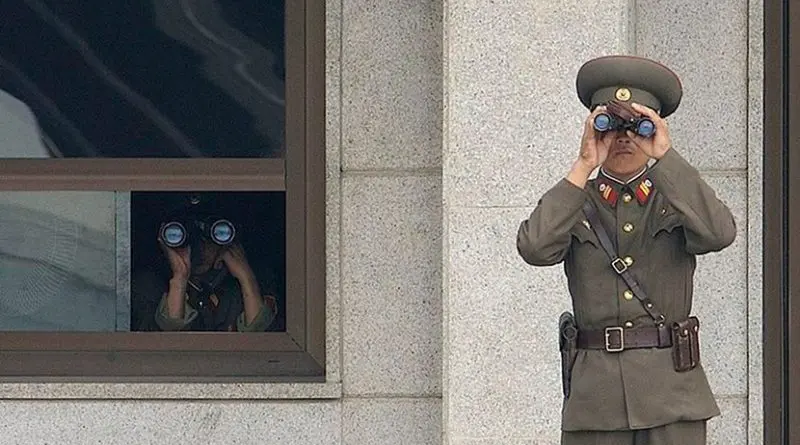Blueprint For The Reintegration Of The Two Koreas – OpEd
The division of Korea by the United States and Russia post-World War II created a lasting conflict that has seen numerous attempts at reconciliation, notably through the Sunshine Policy and trilateral talks among China, Japan, and South Korea. However, a new model is needed to achieve lasting peace, involving informal senior meetings facilitated by Indonesia, escalating to Ministerial and eventually Head of State and Government meetings, ultimately empowering the Koreas to determine their future free from external major power influence.
The Korean Peninsula was poised to become a unified nation following the end of the Japanese occupation in 1945. However, geopolitical tensions between the United States and the Soviet Union led to the division of Korea along the 38th parallel, resulting in the establishment of two separate governments. South Korea, under the aegis of the United States, elected Syngman Rhee as its first president, while North Korea, supported by the Soviet Union, installed Kim Il Sung as its leader. This division set the stage for decades of conflict and tension, culminating in the Korean War and an enduring military standoff.
Since the armistice in 1953, there have been several efforts to reduce tensions and promote peace on the Korean Peninsula. One of the most notable initiatives was the Sunshine Policy, spearheaded by South Korean Presidents Kim Dae Jung and Moon Jae-In. This policy aimed at improving relations through economic cooperation, cultural exchange, and political dialogue, significantly reducing hostilities during its implementation. However, subsequent conservative administrations in South Korea reversed this policy, leading to a resurgence of tension and a setback in inter-Korean relations.
Another attempt to address the issues in the Korean Peninsula has been the trilateral meetings involving China, Japan, and South Korea. While these meetings have contributed to maintaining the status quo, they have not succeeded in achieving significant breakthroughs in reducing tensions or fostering deeper reconciliation. The involvement of the four major powers—China, Russia, the United States, and Japan—has also been insufficient in mitigating the ongoing conflict, as their interests often diverge, complicating efforts to present a united front.
Given the limitations of past and present initiatives, a new model for peace and reintegration is urgently needed. Indonesia has proposed a novel approach involving a small, senior informal meeting between South and North Korea, along with representatives from Russia, China, Japan, and the United States. This informal setting would provide a platform for each party to express their perspectives and propose solutions in a less formal, more flexible environment. Indonesia recognized as a neutral and acceptable mediator, would act as the bridge builder, facilitating dialogue and fostering mutual understanding.
Should the senior informal meetings prove successful, the process would advance to the next level: a Ministerial Meeting of Foreign Affairs. Here, the findings and recommendations from the informal meetings would be scrutinized and debated, to reach consensus on the proposed solutions. This stage is anticipated to take approximately three years, reflecting the complexity and sensitivity of the issues at hand. The success of this phase would pave the way for a summit involving the heads of state and government of the participating nations, where final agreements would be negotiated and ratified.
A critical aspect of this blueprint is the withdrawal of the four major powers from the Korean Peninsula. By removing external influences, the two Koreas would be empowered to engage in direct negotiations and determine their path toward reintegration. This self-determination is essential for sustainable peace and the eventual reunification of Korea.
To address the enduring division and tension on the Korean Peninsula, a structured and phased approach is necessary. Initially, informal senior meetings facilitated by Indonesia would allow for open dialogue and trust-building among the key stakeholders. These meetings would provide a low-pressure environment where innovative solutions could be explored without the constraints of formal diplomatic protocols.
Following the informal meetings, the process would advance to Ministerial Meetings of Foreign Affairs. These meetings would involve detailed discussions on the proposals generated during the informal phase, with the aim of refining and formalizing them into actionable agreements. This stage would be critical for ensuring that all parties are committed to the agreed-upon solutions and are willing to implement them in good faith.
If consensus is achieved at the ministerial level, the process would culminate in a summit involving the heads of state and government. This final stage would involve high-level negotiations to ratify the agreements and outline a clear roadmap for their implementation. The commitment of the highest political authorities in each country would be essential for ensuring the success and longevity of the peace process.
The reintegration of the two Koreas is a complex and challenging endeavor, requiring a multifaceted and inclusive approach. The division imposed by external powers has left a legacy of conflict and mistrust that can only be overcome through direct dialogue, regional cooperation, and the removal of external influences. Indonesia’s proposed model of informal senior meetings, followed by Ministerial and Head of State and Government meetings, offers a pragmatic and hopeful path towards lasting peace and reintegration. By empowering the Koreas to determine their future, free from external interference, this blueprint holds the promise of a more stable and harmonious Korean Peninsula.
The opinions expressed in this article are the author’s own.
References
- “S. Korea says it fired warning shots after N. Korean soldiers crossed the border.” Al Jazeera, 11 June 2024, [https://www.aljazeera.com/news/2024/6/11/s-korea-says-it-fired-warning-shots-after-n-korean-soldiers-crossed- border](https://www.aljazeera.com/news/2024/6/11/s-korea-says-it-fired-warning-shots-after-n-korean-soldiers-crossed-border).
- Lee, Jong-Wha. “The Economic Consequences of North Korea’s Actions.” The Korea Times, 12 June 2024.
- Kim, Min-seok. “China’s Role in Korean Peninsula Security.” Journal of Asian Security, vol. 13, no. 2, 2023, pp. 145-160.
- Park, Sung-hwan. “The Need for Inter-Korean Dialogue.” International Affairs Review, vol. 17, no. 3, 2023, pp. 67-82.
- Choe, Sang-Hun. “U.N.’s Role in North-South Korea Relations.” The New York Times, 10 June 2024.

